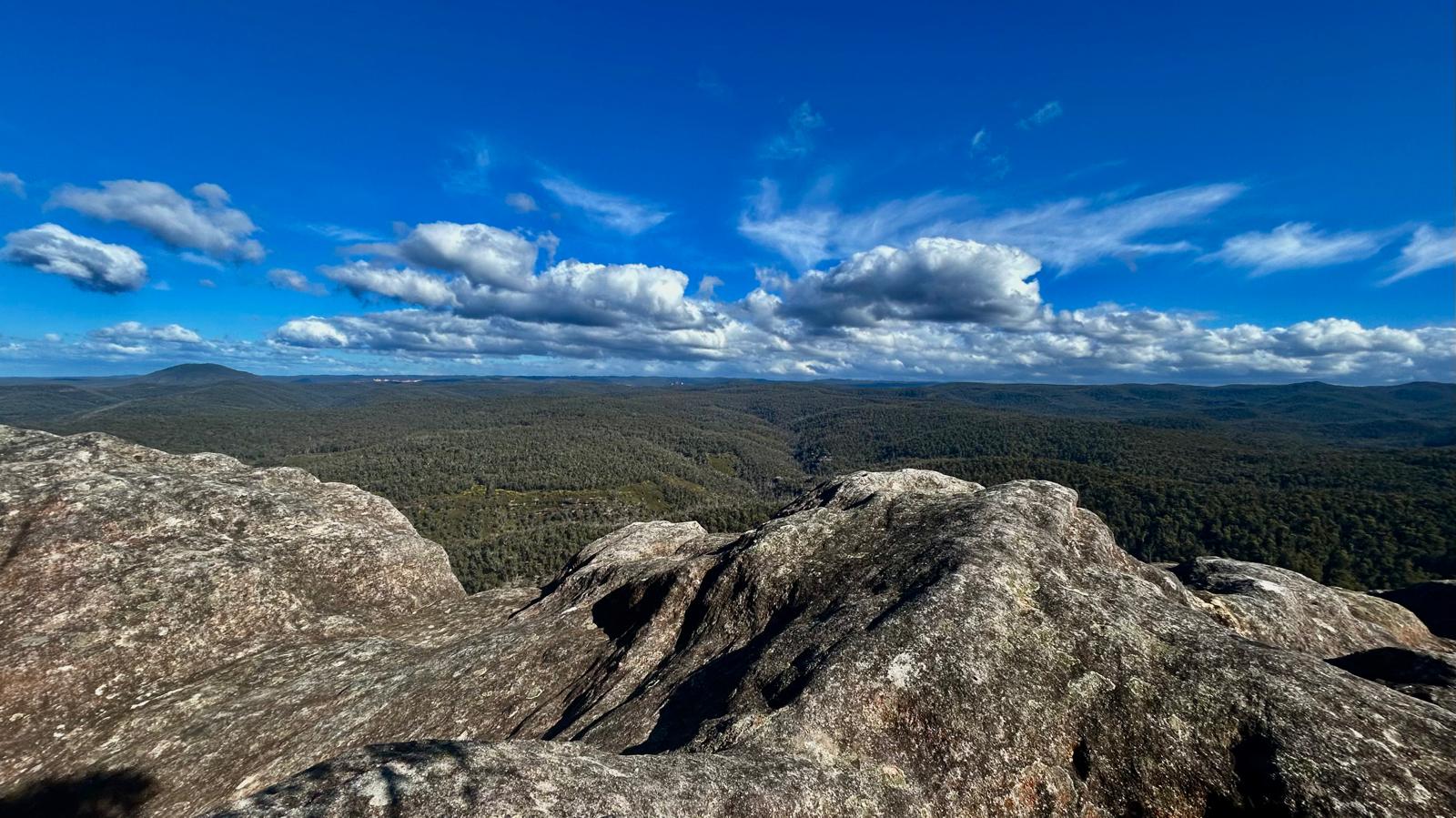Wynnes Rocks Lookout
A short, easy return walk starts at the end of Wynnes Rocks Road. The path leads through a small arboretum of native plants adapted to the sandstone soil, ending at the lookout. The walk is suitable for most fitness levels and takes only a few minutes. BACKSTORY: Wynnes Rocks Lookout, is a scenic vantage point in the Blue Mountains, offering panoramic views over the Grose Valley, Bowen’s Creek, and landmarks like Mount Tomah, Mount Banks, and Mount Hay. Known for its dramatic vistas and historical significance, it is a popular destination for visitors seeking natural beauty and a connection to the region’s heritage. Wynnes Rocks Lookout is named after the Wynne family, one of the founding families of Mount Wilson. Richard Wynne (1822–1895), born in Dublin and arriving in Sydney in 1842, purchased a significant landholding in Mount Wilson to establish an English-style park estate. The lookout is situated at the southwestern edge of the original Wynstay estate, which was later completed by his grandson with the construction of the heritage-listed Wynstay in 1923. The Wynne family also contributed to the region by starting a cold-climate nursery, propagating trees that now define the Blue Mountains’ landscape. In 1912, Wynnes Rocks was gazetted as a trigonometric (trig) station, marked by a steel pole on a concrete base, used for surveying purposes. By 1917, during World War I, local awareness of preserving Mount Wilson’s natural beauty led to the area being set aside as a public lookout and picnic ground under the Mount Wilson Group of the Blue Mountains Sights Reserve Trust. One of the founding trustees was Syd Kirk, a grandson of Robert Kirk, whose family played a significant role in maintaining Mount Wilson’s heritage. The reserve was formalised in 1924, and management was transferred to the Blue Mountains Shire Council in the 1950s. The lookout was historically a popular spot for locals, with families like the Gregsons frequenting it in the 1920s and 1930s for morning picnics or summer evening gatherings, enjoying local produce like raspberries and cream. The site has also been affected by bushfires, notably a major fire in the late 20th century that swept through the region, sparing the large eucalypts but destroying sassafras trees, as observed from Wynnes Rocks Road by Sid Kirk. Turkish Bath: https://www.facebook.com/AskRozBlueMountains/posts/pfbid0H7sW2HouqKDdaf9YBLJZddUPjrj7BjyYMApAgtWDqxs4TPHodrvTQx5cwF5WWQWml
 google.com
google.com